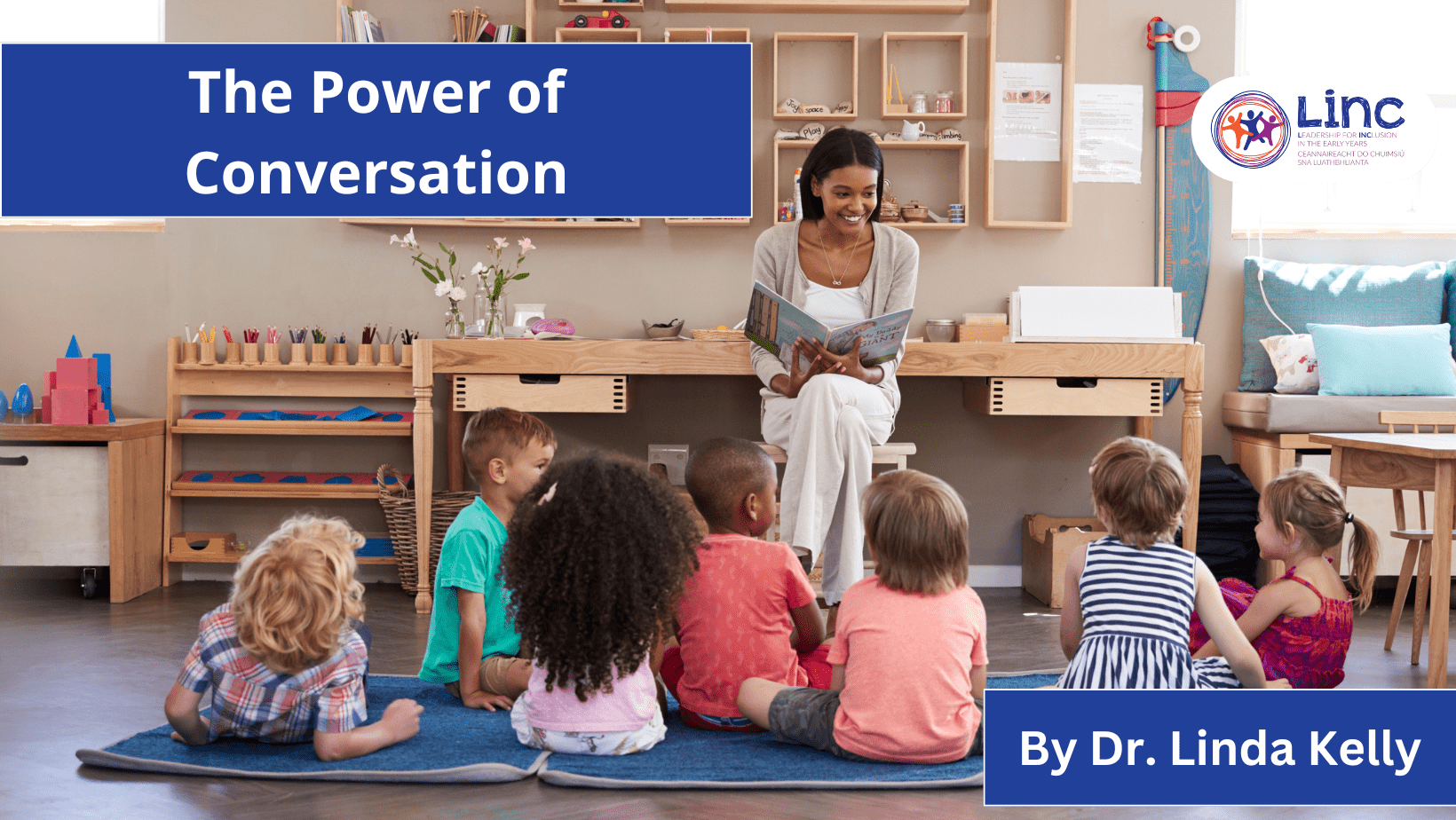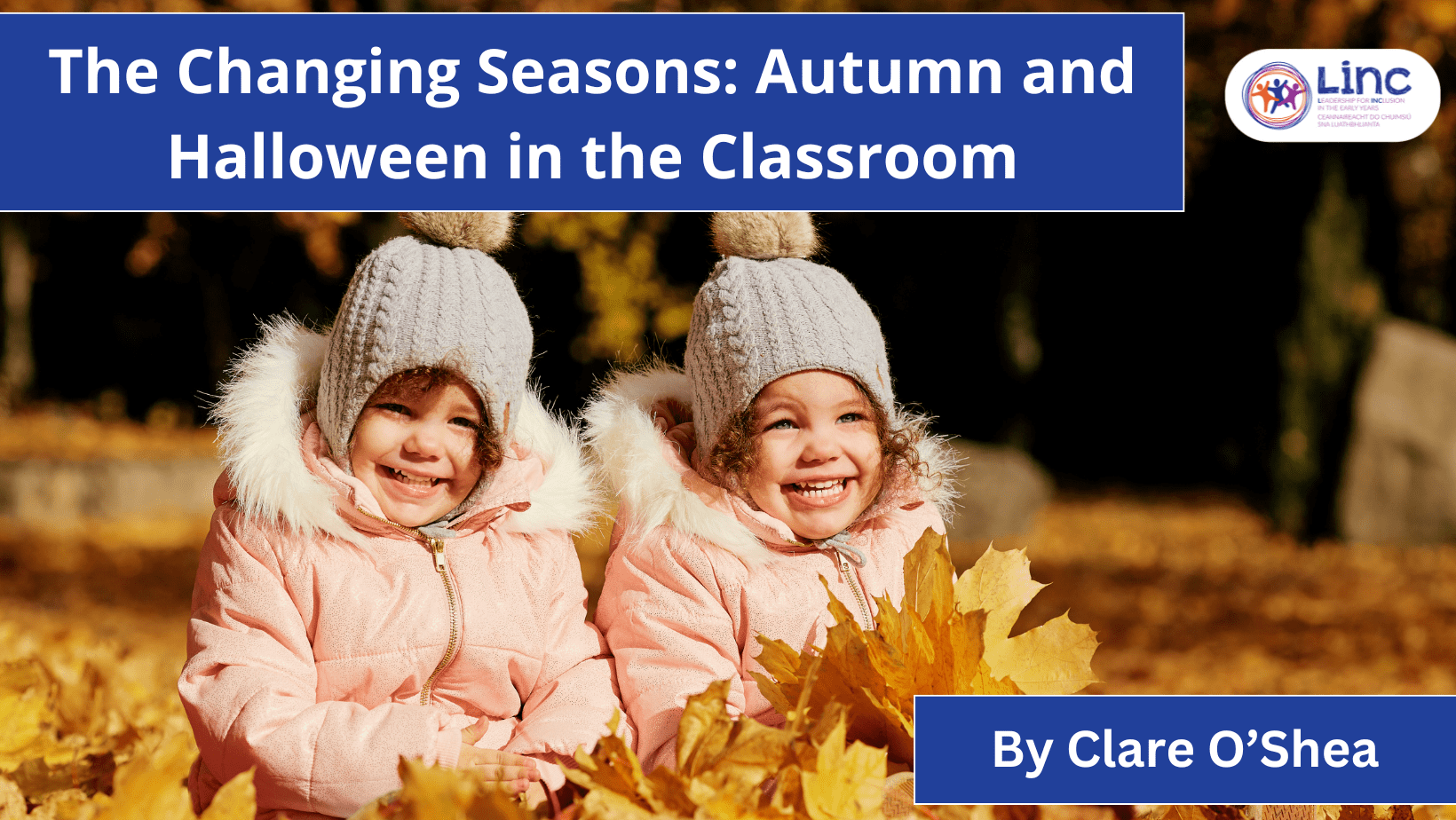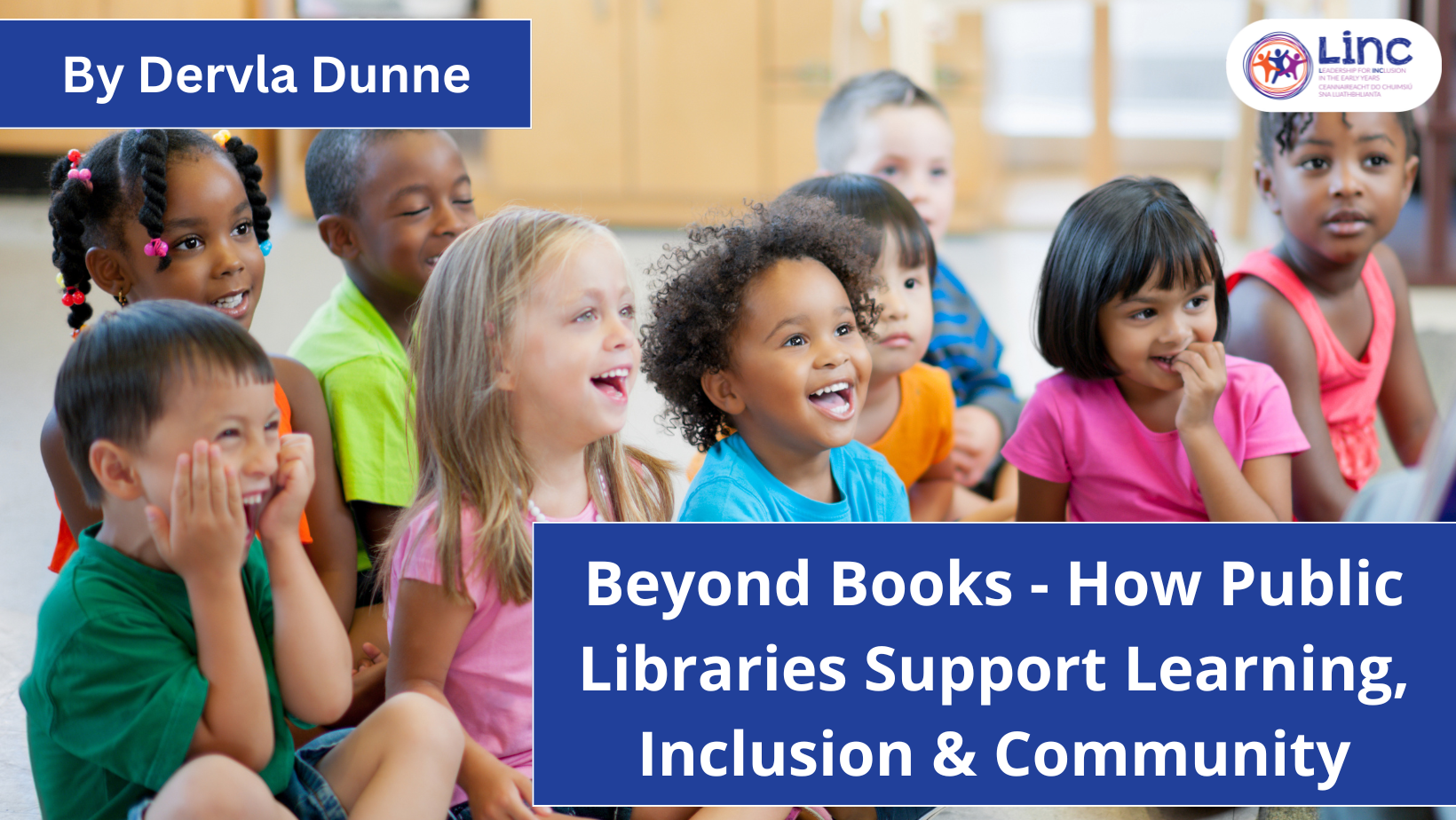The Power of Conversation
In this edition of the LINC Blog, Dr. Linda Kelly delves into the profound impact of adult-child conversations on early language and cognitive development. Discover why simple back-and-forth interactions are more than just small talk – they are essential building blocks for young minds. Learn how child-directed speech, turn-taking, and engaging discussions can boost language skills, social development, and even brain architecture.

“Having a back-and-forth conversation with a child may seem like a small thing, but it turns out it’s everything when it comes to helping them learn language”
– The Hanen Centre
As emphasised by our early childhood frameworks Síolta and Aistear, interactions are key for children’s early learning and development. Whilst children’s early interactive experiences can support all aspects of learning, I am particularly fascinated by the significance of adult-child conversation to children’s cognitive and language development.
When communicating with young children, adults typically use a particular form of language known as child-directed speech (CDS). With infants, CDS is characterised by its higher pitch, melodic contours, and exaggerated vowel sounds. Together, these features of adults’ speech help to grab and sustain babies’ attention, convey emotion, and support pre-verbal infants in segmenting word boundaries within the stream of incoming sound. Adults usually produce this important form of talk instinctively when communicating with babies and young children or, like me, you might even do it when you talk to your dog (and there is research on this! see Gergely et al. 2017 for an example).
The forms and functions of CDS become more advanced in tandem with the child’s developing abilities. In toddlerhood, speech input from adults contains lots of repetition, simplified grammar, and is peppered with questions to scaffold children’s participation in conversation. The reason I am so interested in studying CDS in early childhood is because the words and grammar young children hear when interacting with adults directly supports their language learning. Moreover, engaging children in conversation provides them with rich opportunities to practice their emerging verbal skills and develop the tools to express themselves.
Alongside the linguistic benefits of CDS, the opportunities to develop social language skills are equally significant to children. For instance, an important feature of early adult-child conversation is turn-taking. Conversational turns are defined as “back-and-forth alternations in speech between a child and an adult”. One conversational turn is counted when a child speaks and an adult responds, or vice versa. Whilst the literature on conversational turn-taking primarily focuses on verbal exchanges, children may also take turns using gesture, facial expressions, touch, or sign systems such as Lámh. Adults must therefore remain highly attuned to all forms of children’s communication during interaction.
According to research, young children who experience higher numbers of conversational turns with adults show advantages in their later language and social and emotional development (e.g., Duncan et al. 2023; Gómez and Strasser 2021). Encouraging children to participate in conversation also helps build the architecture of neural connections and pathways in their brains. For instance, greater conversational turn-taking between adults and children is associated with increased activity in regions of the brain responsible for receptive and expressive language (Romeo et al. 2018). Additionally, children’s participation in conversation likely relies on several developing cognitive skills such as attention and executive function (Casillas et al. 2016) as children learn to keep track of incoming speech, process what is being said, plan their response, and wait for their turn.
Greater back-and-forth language exchanges between adults and children can also provide opportunities for educators to learn about each child’s interests, abilities and needs and help build a more emergent curriculum in early years settings. However, research conducted in the US suggests that there is high variability both within and between early years settings in the number of conversational turns young children experience, and many missed opportunities for important language exchanges between educators and children (LENA Team 2019).
According to the Aistear Síolta Practice Guide, educators should use all aspects of the daily routine to interact sensitively with children. Shared book-reading, for example, offers a wonderful context for promoting back-and-forth conversations with children. Together you can delve beyond the text of the book – discussing the illustrations, the characters’ feelings, and what is going to happen next? You can read my previous blog on the benefits of shared book-reading for children’s language development here.
It can also be helpful to think of conversational turn-taking as a game of tennis – one interactive partner “serves” by reaching out for communication with speech or gesture, and the other “returns” by responding verbally, smiling, or signing, and this rally continues on between the two. So much important learning takes place during these exchanges, though it won’t feel like hard work to children who will just be focused on enjoying the interaction with you!
References
Casillas, M., Bobb, S. C., and Clark, E. V. (2016) ‘Turn-taking, timing, and planning in early language acquisition’, Journal of Child Language, 43(6), 1310–1337, available: https://doi.org/10.1017/s0305000915000689.
Duncan, R. J., Anderson, K. L., King, Y. A., Finders, J. K., Schmitt, S. A., and Purpura, D. J. (2023) ‘Predictors of preschool language environments and their relations to children’s vocabulary’, Infant and Child Development, 32( 1), e2381, available: https://doi.org/10.1002/icd.2381.
Gergely, A., Faragó, T., Galambos, Á., and Topál, J. (2017) ‘Differential effects of speech situations on mothers’ and fathers’ infant-directed and dog-directed speech: An acoustic analysis’, Scientific Reports, 7(1), available: https://doi.org/10.1038/s41598-017-13883-2.
Gómez, E., & Strasser, K. (2021) ‘Language and socioemotional development in early childhood: The role of conversational turns’, Developmental Science, e13109, available: https://doi.org/10.1111/desc.13109.
LENA Team (2019) ‘It’s time to shine a light on language isolation in infant and toddler classrooms’, available: https://www.lena.org/classroom-language-isolation/.
Romeo, R. R., Leonard, J. A., Robinson, S. T., West, M. R., Mackey, A. P., Rowe, M. L., and Gabrieli, J. D. E. (2018) ‘Beyond the 30-million-word gap: Children’s conversational exposure is associated with language-related brain function’, Psychological Science, 29(5), 700–710, available: https://doi.org/10.1177/0956797617742725.

Dr. Linda Kelly
Researcher with Early Childhood Ireland
Dr Linda Kelly is a researcher with Early Childhood Ireland. She has also worked as the LINC Programme Researcher since 2021, contributing to the evaluations of the LINC and LINC+ Programmes. She previously completed her PhD in Developmental Psychology with the Infant and Child Research Lab, Trinity College Dublin. Her thesis investigated the importance of the early parent-child interactive environment for children’s development. Linda holds a joint BA in Psychology and French and an MSc in Applied Psychology. Her research interests include observational methods in developmental psychology, play, child participatory research methods, and inclusion.
You may also like:

The Changing Seasons: Autumn and Halloween in the Classroom
The Changing Seasons: Autumn and Halloween in the Classroom In this edition of the LINC Blog, “The Changing Seasons: Autumn and Halloween in the Classroom,” LINC tutor Clare O’Shea shares activity ideas, reflections on Aistear’s themes, and practical tips for making...

Beyond Books – How Public Libraries Support Learning, Inclusion and Community
Beyond Books - How Public Libraries Support Learning, Inclusion & Community In this edition of the LINC Blog, “Beyond Books – How Public Libraries Support Learning, Inclusion & Community”, Dervla Dunne, A/Librarian at Wexford Town Library, takes us on a tour of...

The LINC Programme and MIC Support Shine’s 2025 Green Ribbon Campaign: Step Up to Stamp Out Stigma
The LINC Programme and MIC Support Shine’s 2025 Green Ribbon Campaign: Step Up to Stamp Out StigmaThe Leadership for Inclusion in the Early Years (LINC) Programme and Mary Immaculate College (MIC) are proud to once again support the national Shine Green Ribbon...
